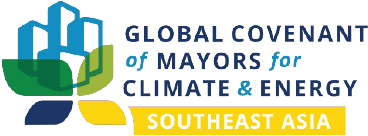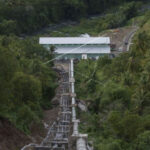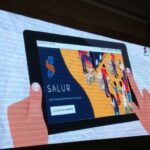Sawahlunto, Indonesia | Standard Health Procedures for Community-Based Tourism
Sawahlunto, Indonesia
Date: July 5, 2023

Fast Facts
- Mayor: Deri Asta
- Population: 65,687
- GCoM Signatory since 2022
Background
The COVID-19 pandemic had a severe impact on the tourism sector of Sawahlunto, which was a crucial source of the city’s economy. Many tourist attractions were temporarily closed to prevent the spread of the virus, leading to a significant decline in tourist arrivals and an adverse impact on the local economy and regional revenue. The government, on the other hand, has taken proactive measures to address the situation by reopening the tourism sector and implementing strict health protocols.[1] These efforts aim to revitalise the city’s economy while also ensuring the safety and well-being of both tourists and residents.
Solutions Implemented
The city government of Sawahlunto conducted extensive introduction efforts in preparation for the reopening of tourist attractions. Various stakeholders, including the management of tourist attractions, Tourism Awareness Groups (Kelompok Sadar Wisata or Pokdarwis), and the public, were educated on the importance of adhering to health protocols at tourist sites. The reopening of tourist attractions coincided with the reopening of hotels and other tourism-related amenities.
Before the reopening, all staff members were subjected to required COVID-19 PCR testing to assure the safety of visitors and personnel. Additionally, digital transaction facilities were provided at tourist attractions to minimise physical contact. According to the protocols, operational hours and visitor capacity were altered and reduced. The involvement of the national army and national police forces was critical in maintaining safety and enforcing compliance with the established health regulations. These comprehensive measures were put in place to safeguard the well-being of both tourists and the local community.
Results and Solutions Learned
The reopening of tourist attractions in Sawahlunto amidst the COVID-19 pandemic aimed to provide several important benefits. For starters, it allowed people to travel safely during challenging times, allowing them to participate in tourism activities while minimising the risk of virus transmission. Secondly, the reopening helped to sustain employment for the staff and management of tourist attractions, ensuring that they could continue to support their livelihoods. Lastly, prioritising the health of tourists by implementing strict health protocols reduced the risk of COVID-19 transmission, instilling confidence among visitors and encouraging them to explore the city’s attractions. Overall, these measures aimed to revitalise the local economy while safeguarding the well-being of both residents and tourists.
[1] LOCALISE SDGs Indonesia, “A Compilation of Best Practices,” Localise SDGs, from https://localisesdgs-indonesia.org/asset/file/newsletter/publikasi/Buku%20Saku%203.pdf








